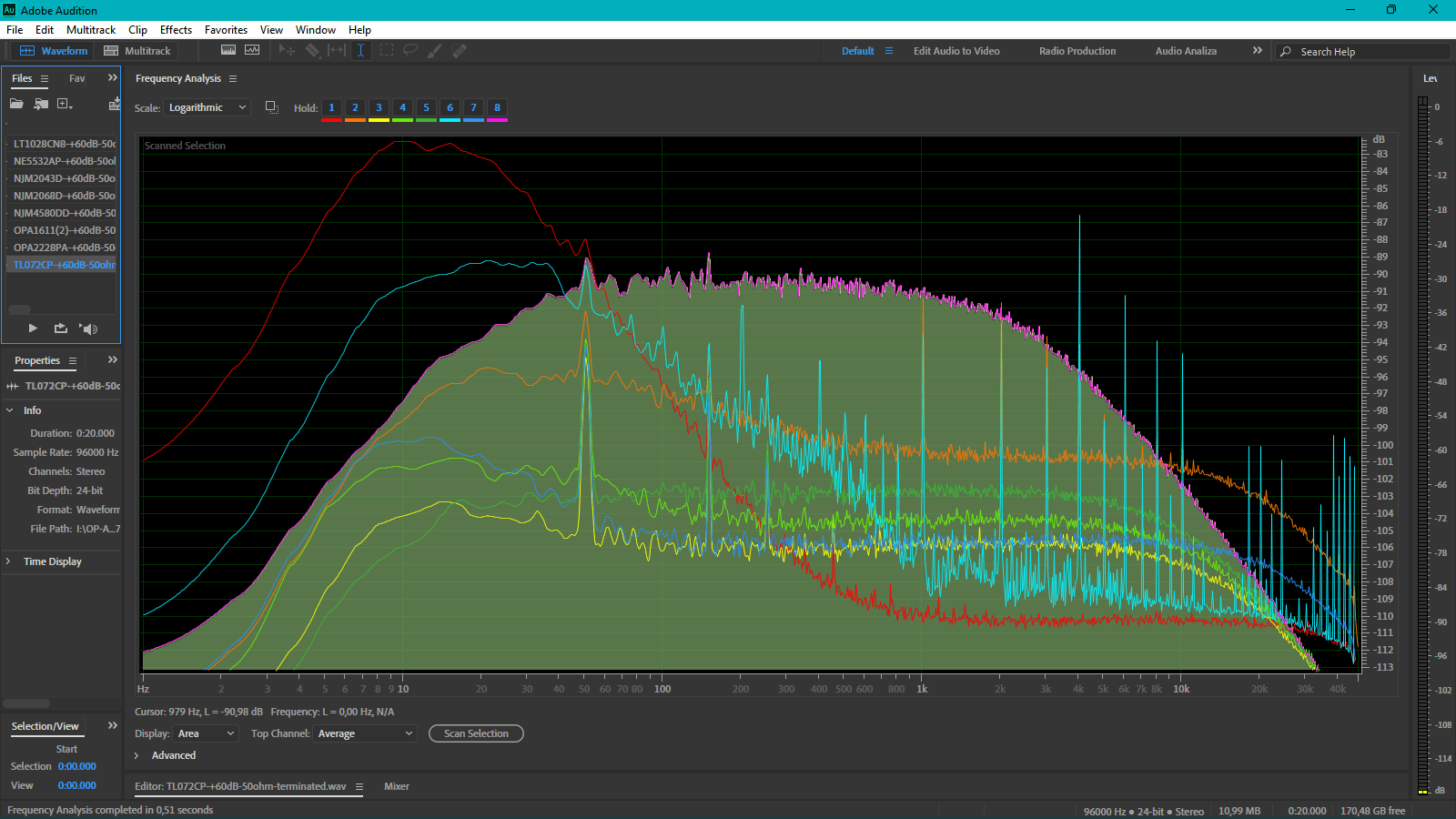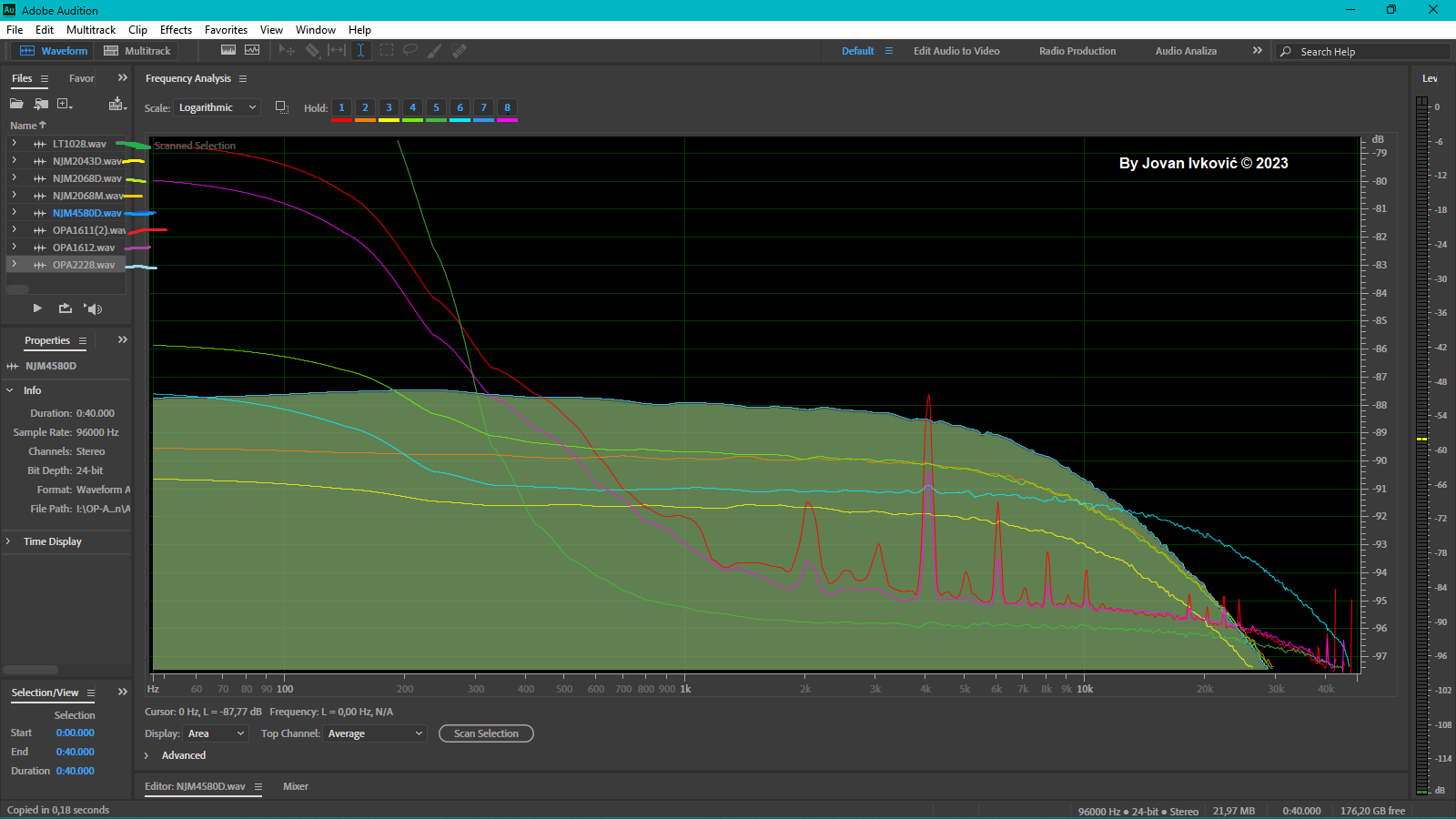Just one clarification and little quiz. fist an answer to people who (indirectly) ask my why NJM and not some super-duper AD, TI-OPA, LME (like AD80xx/ADA4871 or OPA21/26/16xx, LM4562/LME497xx) Op.Amp for this Pre-Amp modification. Yes I tried loot of them (almost all known) and scientifically measure all of them in real-time application environment, and only after all of that I rejected all prejudices and choose one that have balanced impact factor of 90% on performance and just 10% price. So for example if OPA1612 is just 11% better I will blindly took them even if it is more then 9x more expensive (and it is).
When someone who has done "sponsored" research and says something like the AD79* OPA2132 or LM4562 is 100x better and suggests you replace your component with another one just so you can buy ie. get a 20x more expensive part with "0" impact, just say "goodbye and a pleasant journey".
And now quiz, for all of you who like to get and swap engineered prefabricated IC Op.Apms for "newer, more modern and forum says better Op. Amps" just by "sound of it name" and by looking at datasheets that was prepared by a producers marketing (not the engineering) department to look super-hyper-fantastic.
Look on this picture and give me answer what you think, which tested Op-Amp (list of tested is in left-up corner) have which corresponding color line of spectral image? To make it more easy I already mapped TL072CP as last one in "pink".
All Op.Amps are measured with same setup, and environment with BNC-50Ohm terminated canal input, on dedicated 12,6V battery powers supply, while the assembly is placed in a transformer sheet box (better protection against electric and magnetic fields) which was properly grounded. an audio cable ("Taskers C121 2x0.25 Professional Noiseless Audio Cable Low Capacity" was used with profy golden connectors, and setup has:190mO/260pF) routed the resulting amplified signal to an optimized* dedicated sound card. etc.
Take a good look at the picture as some of the answers will surprise you

As a hint, look at this zoomed version:

All Op.Amps was subjected to same conditions in setup done with +40dB gain and inputs was terminated with 50 Omh (BNC) - Recorded with SB (-116dB SNR upgraded) in ASIO mode.
 Jovan
Jovan
Discussions
Become a Hackaday.io Member
Create an account to leave a comment. Already have an account? Log In.